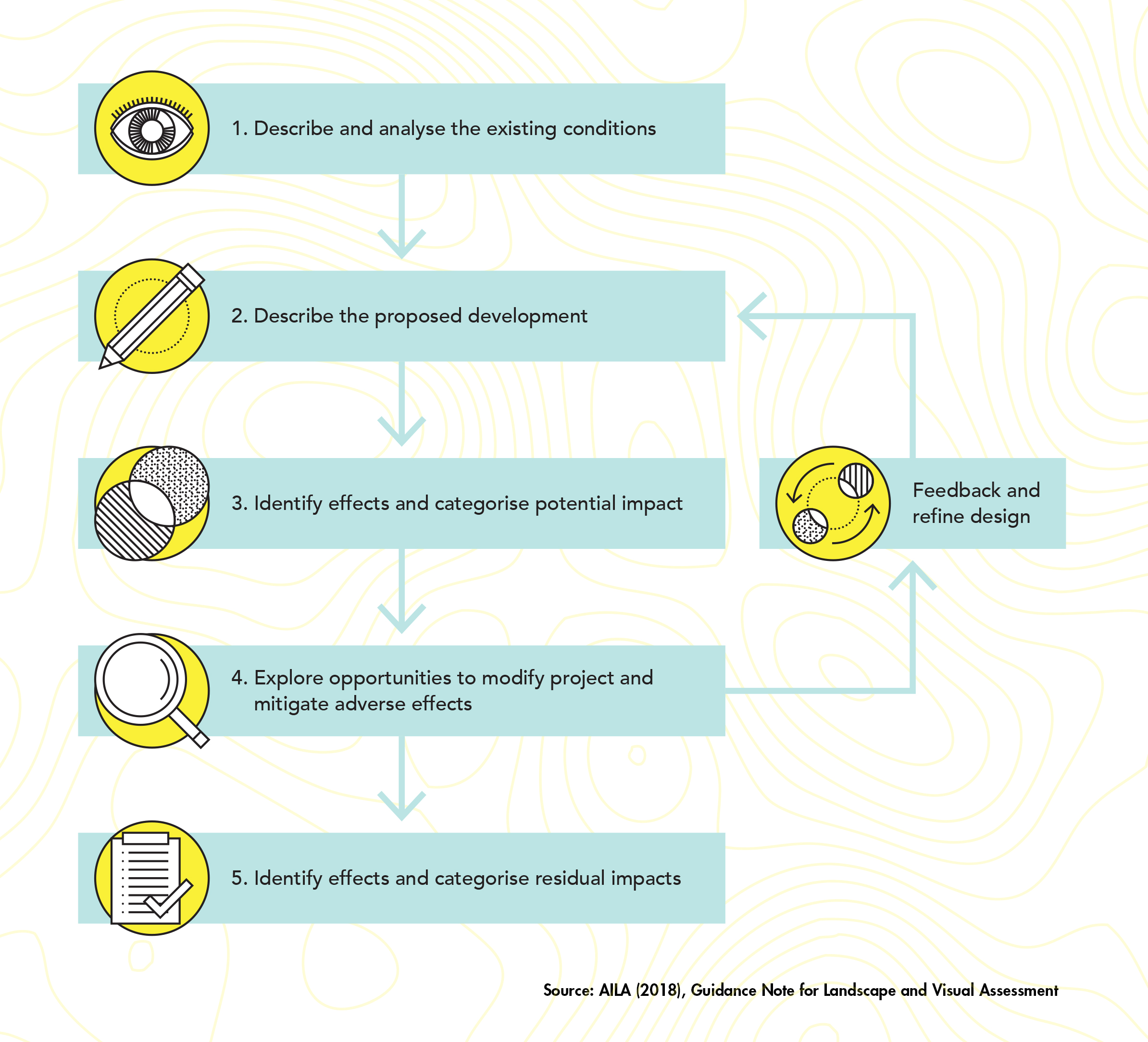Landscape and Visual Impact Assessment (LVIA)
TRACE experience in the preparation of VIA studies is extensive through successful of completion of numerous complex studies. These studies are prepared for a wide range of developments including infrastructure to urban developments. We adopt rigorous methodologies and approaches for various types of developments related to specific visual concerns. A combination of assessment methods will be applied in these studies including analysing and describing landscape character and visual amenity, mapping of Zone of Visual Influence (ZVI), identification of receptors and sensitivities, assessment of visual change and impacts on both the landscape and receptors during different stages of projects. As part of LVIA studies, design options and management measures that may be undertaken to minimise, avoid or mitigate any potential visual impacts at early stages of the design process.
Consideration of visual receptors, their views, and potential view intrusions are key factors in defining visual constraints and building height thresholds. This approach assists the architects and developers in proposing sensitive building envelopes that consider their visual context and sensitivities.With the completion of numerous VIAs in Australia (VIC, QLD, NSW & WA), we are confident in adopting a robust methodology to address the key concerns associated with your projects. Our quantitative approach in using GIS and spatial analysis provides an objective and assessment of visual impacts.
Visual and amenity impacts are increasingly the focus of disputes regarding a range of developments, and as such TRACE provides expert witness services and testimonies for these inquiries.
Ata Tara (TRACE Director) was part of core writing team of recent AILA (QLD) Guidance Note for Landscape and Visual Impact Assessment (2018). Methodology described in this document include fundamental steps that must be undertaken to conduct a valid LVIA.

